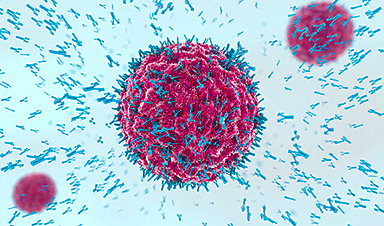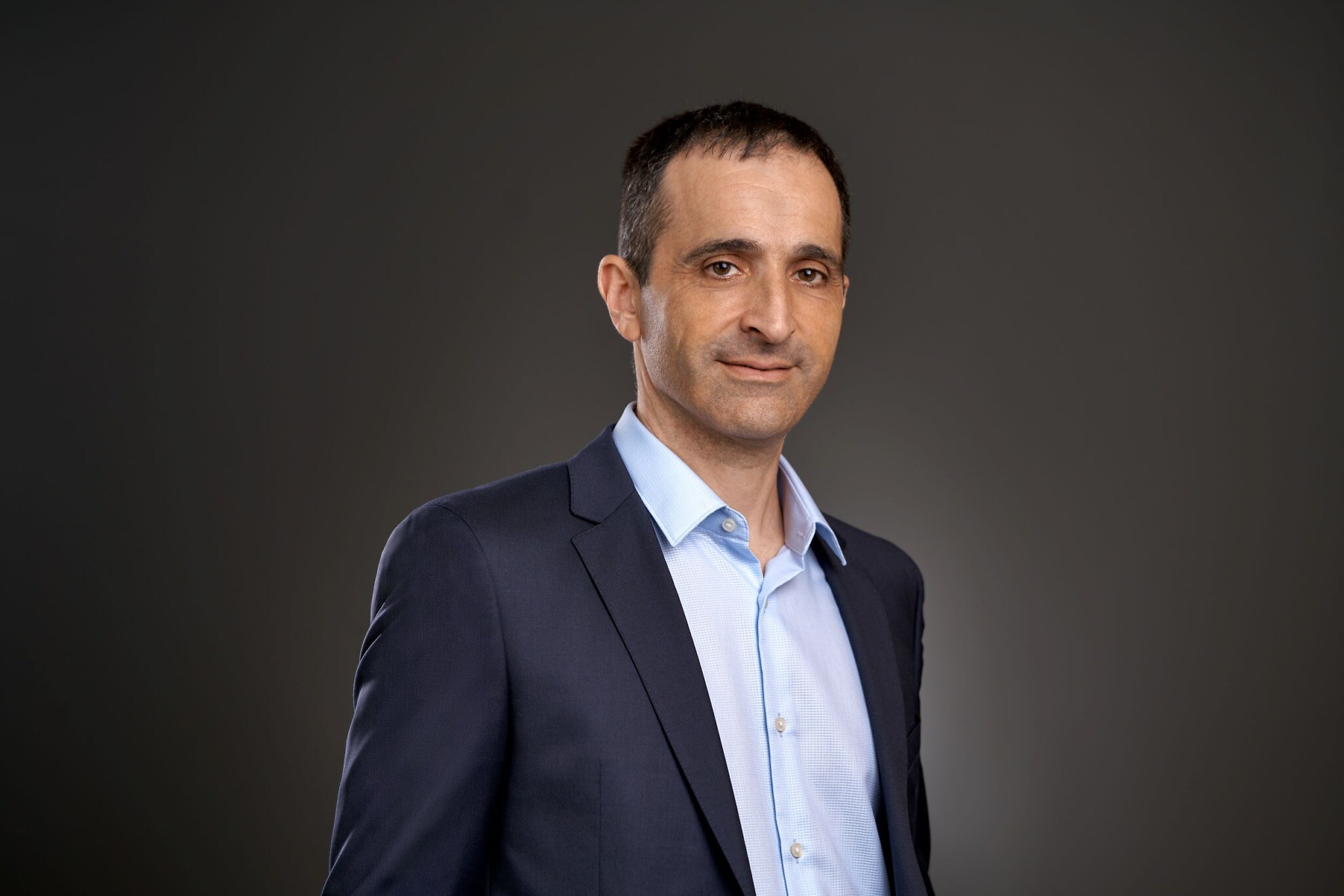Cancer patients are testing a medicine made of antibodies that were designed from scratch on a computer in Israel and whose inventor has “programmed” them to “decide” whether cells surrounding tumors are bad or good.
If the trial, which is underway in Australia, goes according to plan, these antibodies will fight cells that help the tumor while boosting the abilities of cells that inhibit cancer growth.
Their inventor, Prof. Yanay Ofran, said that until now, antibody treatments have been based on human or animal antibodies. They are then developed in labs and mass produced, but the final product retains limitations from the original antibodies.
“Antibodies are very successful, but the way they are used in medicine today utilizes only a fraction of their capability,” he told The Times of Israel. “Our mission is to take antibodies and seize on the fact they are safe, stable, easy to use and can stay on the shelf for years, to unlock their full ability.”
Ofran, a Bar Ilan University professor, has published numerous peer-reviewed studies on his method of designing antibodies on a computer. They emphasize the “smart” quality of the new antibodies.
This means that instead of carrying out a single function, like fighting a single virus, they can survey their surroundings and act in different ways when faced with different types of cells. Ofran refers to them as “nano-robots.”
The new AU-007 antibody treatment is the first computer-designed antibody to enter a human trial, he said. It was designed by artificial intelligence software at the Rehovot offices of his startup Biolojic Design, and is being trialed by its spin-out company Aulos Bioscience. Biolojic is now working on several other treatments.
Ofran’s breakthrough results from a laborious research process, which involves creating many millions of antibodies and monitoring their behavior in the lab.
His team’s artificial intelligence software analyzes the data on how the antibodies behave. “We learn from the observations we collect how to create a new antibody that will do exactly what we want it to do,” said Ofran.
AU-007 uses antibodies that can “feel” or “sense“ their surroundings and differentiate between cells that are likely to help or hinder a tumor based on features on the cell’s exterior such as cilia, which are protruding antenna-like structures.
“What we’re doing is to use the antibody to identify the cells they meet, and activate cells that can attack the tumor while stopping cells that help the tumor,” Ofran explained.
Ofran is a descendent of one of Israel’s best-known scientists. His grandfather Prof. Yeshayahu Leibowitz, while most remembered for his religious and political writing, was a professor of organic chemistry and neurology, and a leader in those fields during Israel’s early decades.
Ofran hopes that his work will change scientists’ understanding of the potential of antibodies. Today they are generally deployed to perform a single task — for example, to neutralize coronavirus. As he puts it, they are “one-trick ponies.”
Designing antibodies by computer opens up the possibility of making them multi-function, as illustrated by AU-007’s ability to boost cancer-fighting cells but do the opposite with cells that help cancer.
“Instead of just seeking out one environment and reacting always with the same response, we’re producing antibodies that can act conditionally, meaning if the cells appear one way they do ‘x,’ and if they look another way they do ‘y,’” Ofran said.
“This opens up the door to smarter therapeutics that can execute sophisticated plans to cure disease.”
News
Scientists Unlock a New Way to Hear the Brain’s Hidden Language
Scientists can finally hear the brain’s quietest messages—unlocking the hidden code behind how neurons think, decide, and remember. Scientists have created a new protein that can capture the incoming chemical signals received by brain [...]
Does being infected or vaccinated first influence COVID-19 immunity?
A new study analyzing the immune response to COVID-19 in a Catalan cohort of health workers sheds light on an important question: does it matter whether a person was first infected or first vaccinated? [...]
We May Never Know if AI Is Conscious, Says Cambridge Philosopher
As claims about conscious AI grow louder, a Cambridge philosopher argues that we lack the evidence to know whether machines can truly be conscious, let alone morally significant. A philosopher at the University of [...]
AI Helped Scientists Stop a Virus With One Tiny Change
Using AI, researchers identified one tiny molecular interaction that viruses need to infect cells. Disrupting it stopped the virus before infection could begin. Washington State University scientists have uncovered a method to interfere with a key [...]
Deadly Hospital Fungus May Finally Have a Weakness
A deadly, drug-resistant hospital fungus may finally have a weakness—and scientists think they’ve found it. Researchers have identified a genetic process that could open the door to new treatments for a dangerous fungal infection [...]
Fever-Proof Bird Flu Variant Could Fuel the Next Pandemic
Bird flu viruses present a significant risk to humans because they can continue replicating at temperatures higher than a typical fever. Fever is one of the body’s main tools for slowing or stopping viral [...]
What could the future of nanoscience look like?
Society has a lot to thank for nanoscience. From improved health monitoring to reducing the size of electronics, scientists’ ability to delve deeper and better understand chemistry at the nanoscale has opened up numerous [...]
Scientists Melt Cancer’s Hidden “Power Hubs” and Stop Tumor Growth
Researchers discovered that in a rare kidney cancer, RNA builds droplet-like hubs that act as growth control centers inside tumor cells. By engineering a molecular switch to dissolve these hubs, they were able to halt cancer [...]
Platelet-inspired nanoparticles could improve treatment of inflammatory diseases
Scientists have developed platelet-inspired nanoparticles that deliver anti-inflammatory drugs directly to brain-computer interface implants, doubling their effectiveness. Scientists have found a way to improve the performance of brain-computer interface (BCI) electrodes by delivering anti-inflammatory drugs directly [...]
After 150 years, a new chapter in cancer therapy is finally beginning
For decades, researchers have been looking for ways to destroy cancer cells in a targeted manner without further weakening the body. But for many patients whose immune system is severely impaired by chemotherapy or radiation, [...]
Older chemical libraries show promise for fighting resistant strains of COVID-19 virus
SARS‑CoV‑2, the virus that causes COVID-19, continues to mutate, with some newer strains becoming less responsive to current antiviral treatments like Paxlovid. Now, University of California San Diego scientists and an international team of [...]
Lower doses of immunotherapy for skin cancer give better results, study suggests
According to a new study, lower doses of approved immunotherapy for malignant melanoma can give better results against tumors, while reducing side effects. This is reported by researchers at Karolinska Institutet in the Journal of the National [...]
Researchers highlight five pathways through which microplastics can harm the brain
Microplastics could be fueling neurodegenerative diseases like Alzheimer's and Parkinson's, with a new study highlighting five ways microplastics can trigger inflammation and damage in the brain. More than 57 million people live with dementia, [...]
Tiny Metal Nanodots Obliterate Cancer Cells While Largely Sparing Healthy Tissue
Scientists have developed tiny metal-oxide particles that push cancer cells past their stress limits while sparing healthy tissue. An international team led by RMIT University has developed tiny particles called nanodots, crafted from a metallic compound, [...]
Gold Nanoclusters Could Supercharge Quantum Computers
Researchers found that gold “super atoms” can behave like the atoms in top-tier quantum systems—only far easier to scale. These tiny clusters can be customized at the molecular level, offering a powerful, tunable foundation [...]
A single shot of HPV vaccine may be enough to fight cervical cancer, study finds
WASHINGTON -- A single HPV vaccination appears just as effective as two doses at preventing the viral infection that causes cervical cancer, researchers reported Wednesday. HPV, or human papillomavirus, is very common and spread [...]






















